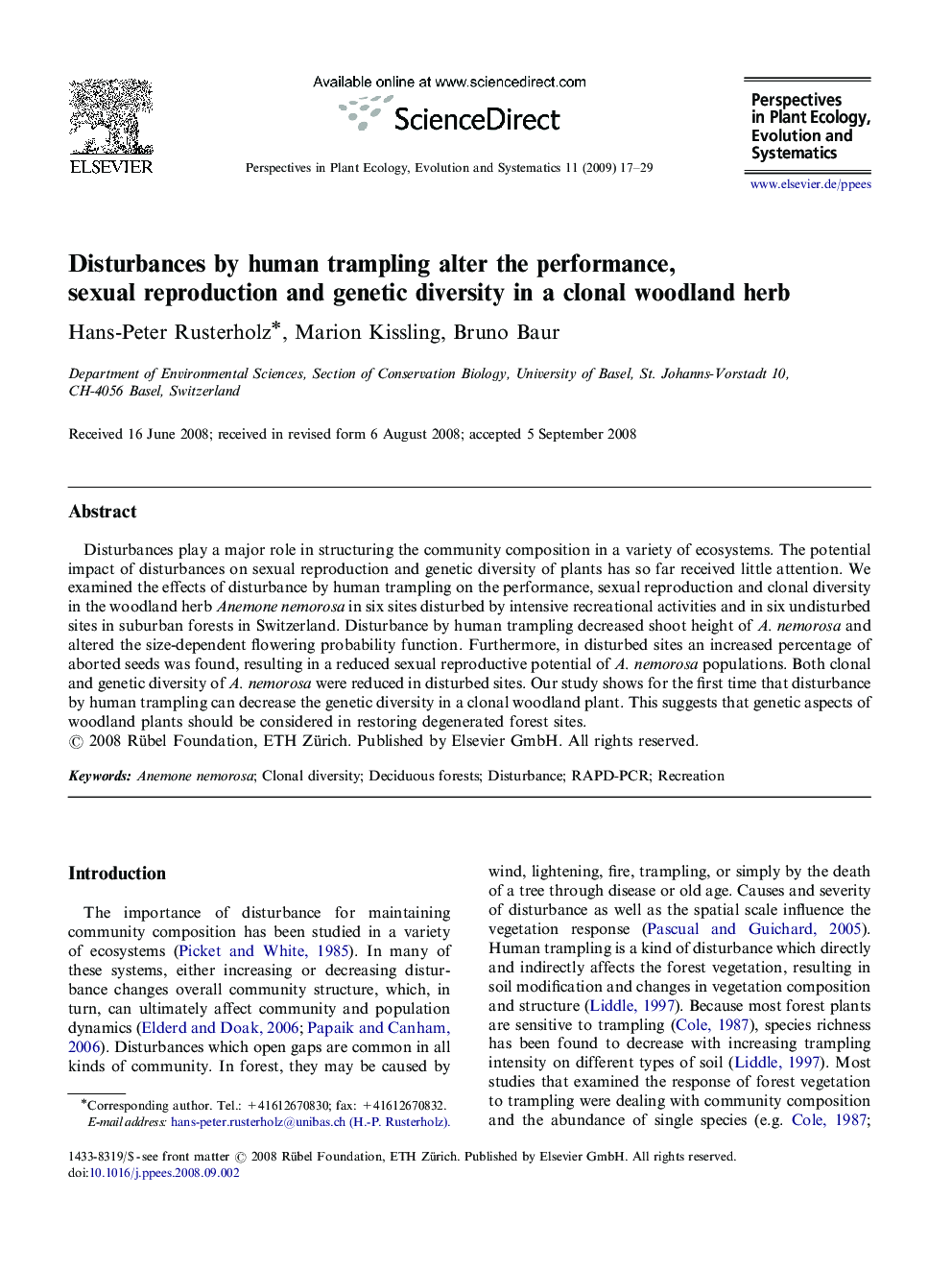| Article ID | Journal | Published Year | Pages | File Type |
|---|---|---|---|---|
| 4401179 | Perspectives in Plant Ecology, Evolution and Systematics | 2009 | 13 Pages |
Disturbances play a major role in structuring the community composition in a variety of ecosystems. The potential impact of disturbances on sexual reproduction and genetic diversity of plants has so far received little attention. We examined the effects of disturbance by human trampling on the performance, sexual reproduction and clonal diversity in the woodland herb Anemone nemorosa in six sites disturbed by intensive recreational activities and in six undisturbed sites in suburban forests in Switzerland. Disturbance by human trampling decreased shoot height of A. nemorosa and altered the size-dependent flowering probability function. Furthermore, in disturbed sites an increased percentage of aborted seeds was found, resulting in a reduced sexual reproductive potential of A. nemorosa populations. Both clonal and genetic diversity of A. nemorosa were reduced in disturbed sites. Our study shows for the first time that disturbance by human trampling can decrease the genetic diversity in a clonal woodland plant. This suggests that genetic aspects of woodland plants should be considered in restoring degenerated forest sites.
